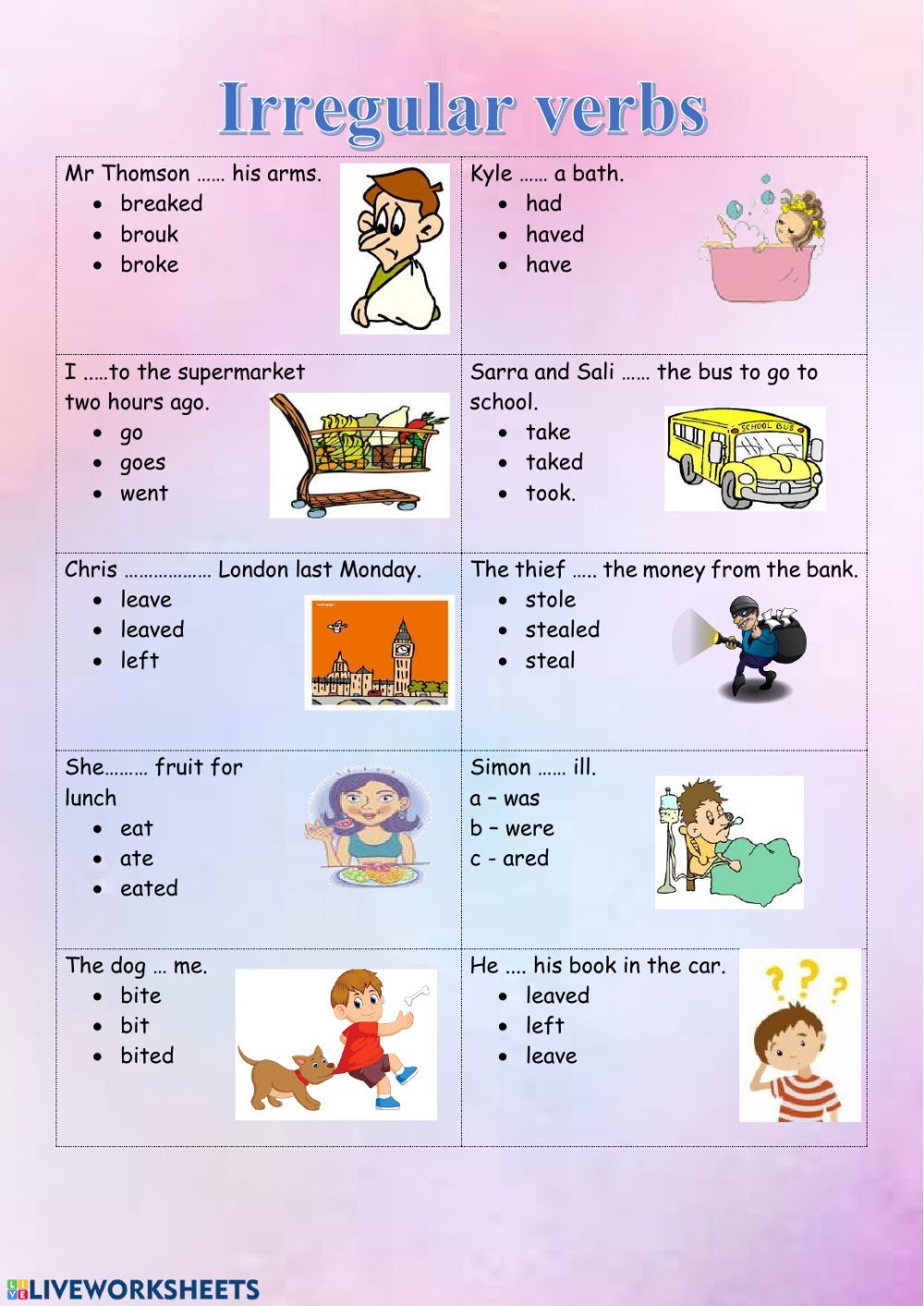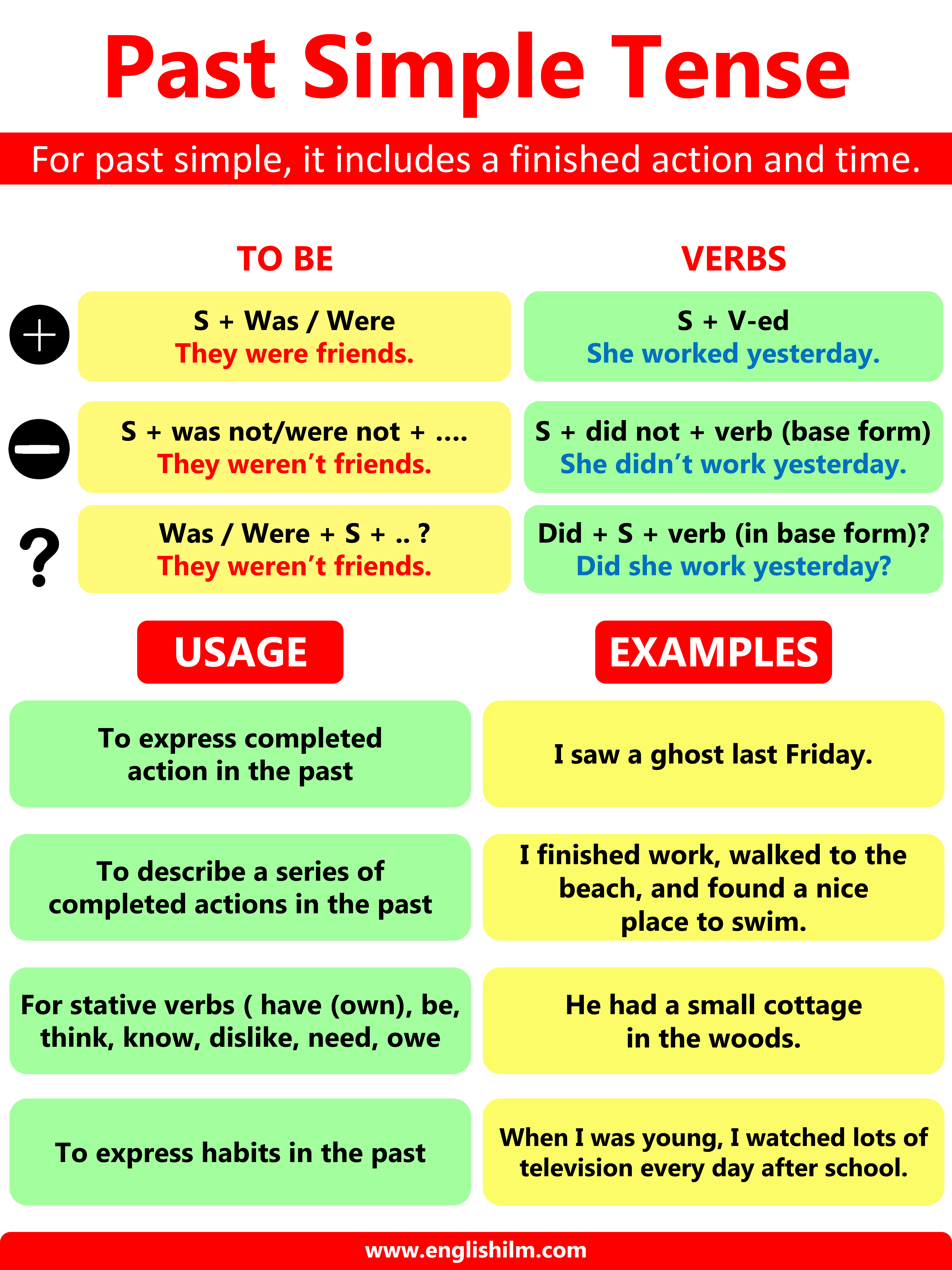Mastering Simple Past Tense: Interactive Worksheet

Understanding and mastering the simple past tense is a crucial step in learning English, whether you are a beginner looking to expand your grammar skills or an intermediate learner aiming to refine your understanding. This guide dives deep into the usage, forms, and applications of the simple past tense, enriched with an interactive worksheet designed to solidify your knowledge through practice.
What is Simple Past Tense?

The simple past tense refers to actions or events that happened at a specific time in the past and are now completed. It’s commonly used when:
- Speaking about events that took place at a specific time.
- Talking about a series of completed actions.
- Describing habits or conditions in the past that are no longer true.
Here are the key rules to remember:
- Regular Verbs: Add -ed or -d to the base form of the verb (e.g., walk becomes walked).
- Irregular Verbs: These change form completely or partially (e.g., go becomes went).
Forming Simple Past Tense

| Subject | Auxiliary Verb (for negative sentences) | Verb (in past tense) | Example |
|---|---|---|---|
| I/He/She/It | did not (didn't) | base form of verb | He didn't play yesterday. |
| We/You/They | did not (didn't) | base form of verb | They didn't enjoy the film. |

Using Simple Past Tense in Conversations

Here are some practical scenarios where simple past tense is used:
- Describing a specific event: "I saw the most beautiful sunset last night."
- Describing historical events: "Napoleon was defeated at Waterloo."
- Expressing past habits: "I used to go swimming every weekend."
Interactive Worksheet for Practice

Engage with the following worksheet to test and enhance your understanding:
Exercise: Fill in the Blanks with Simple Past

Complete the sentences using the simple past tense:
- Yesterday, I __________ (run) to the store because I forgot to buy bread.
- When I was a child, I often __________ (play) in the park with my friends.
- She __________ (not finish) her homework last night.
- They __________ (go) to the museum and __________ (learn) about ancient history.
🖊️ Note: Remember, for negative sentences, use the auxiliary verb 'did' and the base form of the verb.
This exercise not only tests your ability to conjugate verbs correctly but also helps in understanding context and usage in various sentences.
By now, you should have a clear grasp of when and how to use the simple past tense in English. This tense is fundamental in narrating past events, reflecting on past experiences, or describing historical facts. Through consistent practice, the ability to form and use past tense verbs will become second nature. Remember, English verb forms can sometimes be irregular, making it worthwhile to familiarize yourself with these through reading or interactive exercises.
How do you form negative sentences in the past tense?

+
To form negative sentences, use the auxiliary verb ‘did’ followed by ‘not’ and the base form of the verb. For example, “He did not eat breakfast.”
What are some common irregular verbs in the past tense?

+
Irregular verbs like ‘go’ (went), ‘see’ (saw), and ‘be’ (was/were) change form when used in the past tense. Memorizing these forms can aid in fluent speaking.
Can we use simple past tense to describe an ongoing action in the past?

+
No, for ongoing actions in the past, you would use the past continuous tense, like “I was walking when it started to rain.”
Upon mastering simple past tense, one gains the ability to construct and understand historical narratives, personal stories, or any recount of events, enriching both written and spoken English.